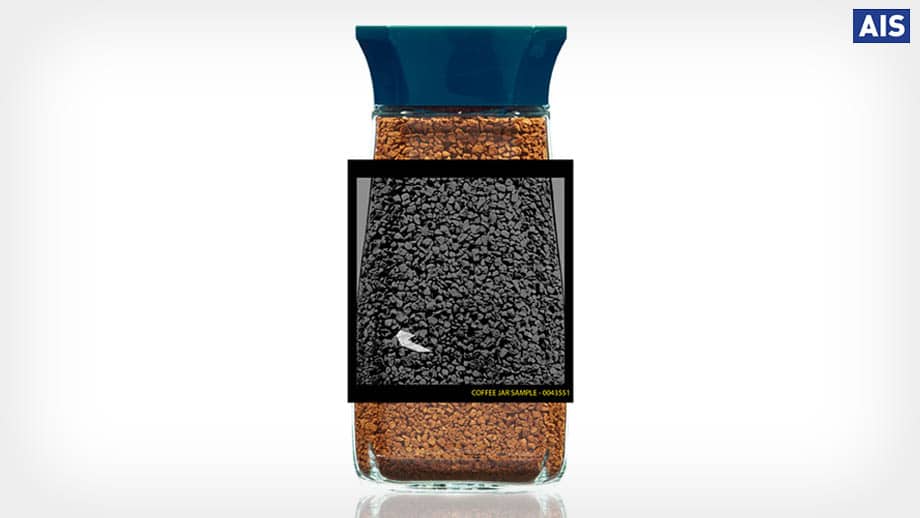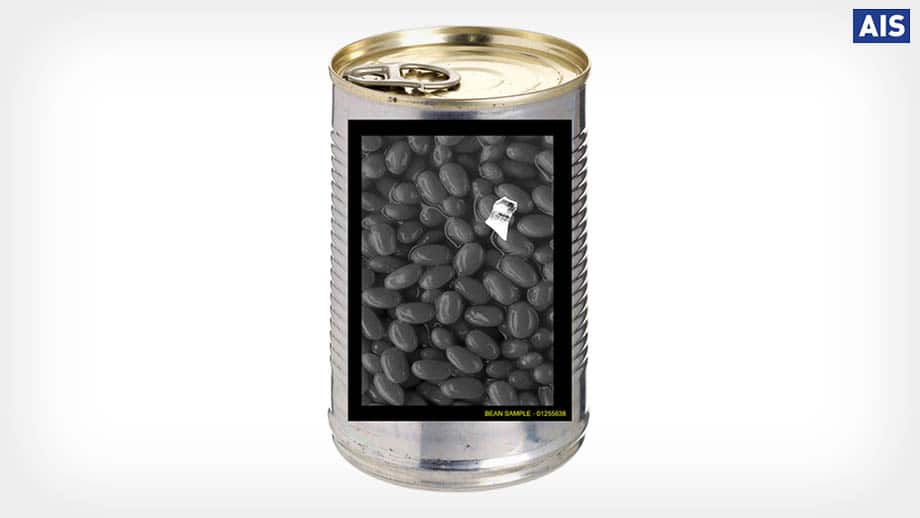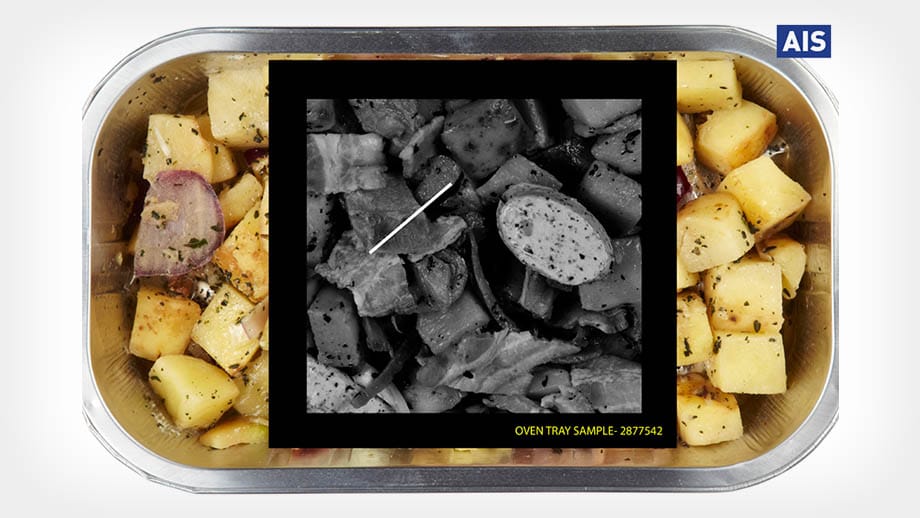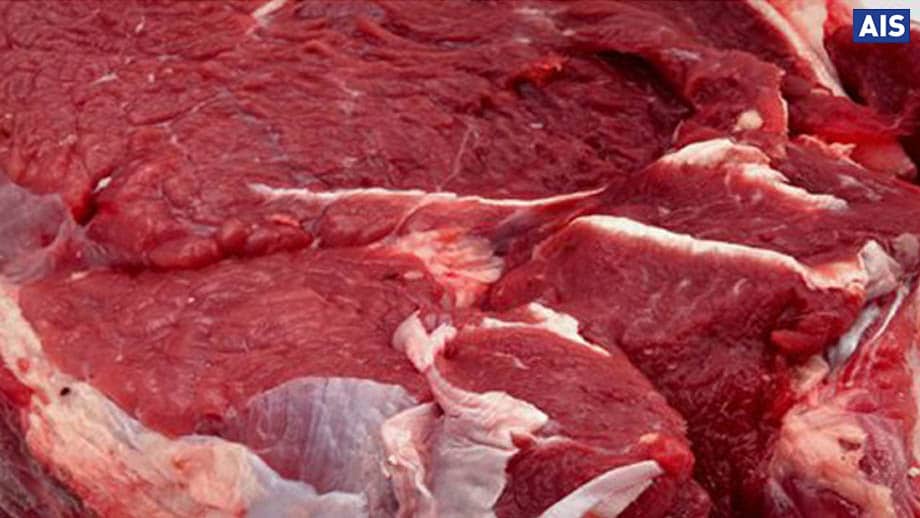Food x-ray inspection services and food inspection systems & equipment for a wide range of food and packaging types
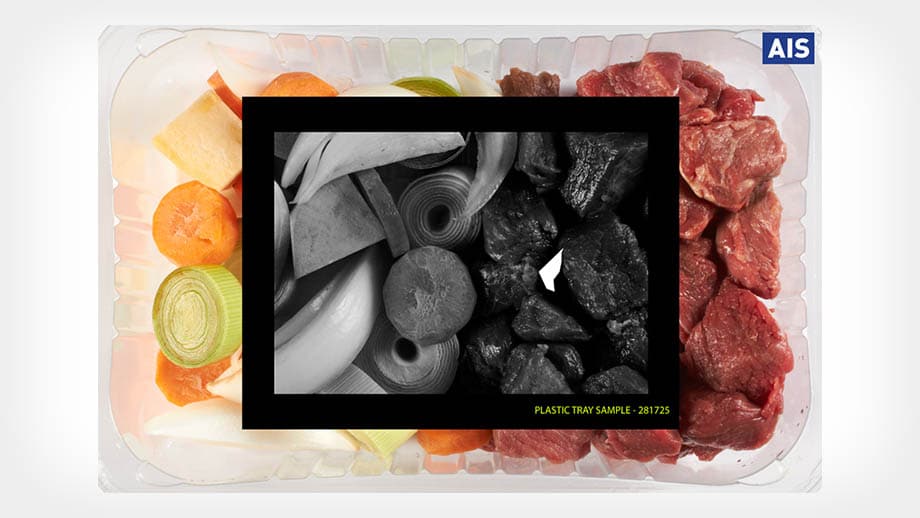
Our food x-ray inspection equipment for packaged products is specifically designed for precise end-of-line quality control or raw materials inspection prior to further processing.
These, purpose built, specialised food x-ray inspection systems are highly effective at detecting the smallest contaminants and comply with all major food safety standards. These advanced inspection systems have the very latest technology which deliver significantly higher detection performance than standard food x-ray equipment – please try us if your equipment has failed to find the contaminant you are looking for.
Our range of food x-ray inspection equipment is equipped to inspect the full range of food and packaging types and sizes – Steel cans, glass containers, sachet products, sacks of ingredients up to 25kg and large cases cheese and meat products. As well as detecting metal, glass, stone and bone fragments, certain plastic and composite materials can also be detected such as seals and gaskets.
Why use food X-ray inspection systems for contaminant detection?
Product inspection systems are now an integral part of safe food production, as well as being a prerequisite of IFS certification. Contaminated products and resultant product recalls can have significant consequences for any food manufacturing business. Any subsequent brand damage can take a considerable amount of time and expenditure to recover. Developments in x-ray technology with ultra high-resolution sensors and multi-energy technology can now detect contaminants of much smaller size and of lower density material in complex food matrices.
X-ray food inspection is the most valuable technique to use when you have a contamination problem.
What can our food x-ray equipment detect?
Our advanced x-ray food inspection equipment and technology can detect quality issues and foreign body contaminants within virtually any packaged food or drink items. X-ray food inspection systems can detect contaminations with metal, stones, glass, ceramics, and other similar materials.
What food types do we inspect?
How does an X-ray system work?
X-rays are a form of invisible electromagnetic energy with short wavelengths which most people are familiar with through its use in airport security and medical imaging. The interaction of x-rays passing through food products produces, because of the variable attenuation of the products components, a “shadow graph” of the internal structure. This allows the imaging of the internal structures of the food and internal features or contaminants within the food item under inspection. If the X-ray encounters a dense area in the food, such as a glass or metal contaminant, this will reduce the X-ray energy further.
The sub-millimetre x-ray sensor detects the x-ray beam and converts the x-ray into a “greyscale” image of the product and its contents. This image is then passed to the x-ray system processor which performs multiple simultaneous algorithms which are configured to the client’s foreign body detection limits.The x-ray system will reject the product and the system will store an image of this product in memory for the customer report
Why choose our x-ray food inspection services?
Our food x-ray inspection services and systems are exceptionally reliable and highly customisable. We can x-ray food and FMCG in all shapes, sizes and forms of packaging – often without removing goods from the cases.
What’s more, our x-ray food inspection service is always fast, cost-effective and confidential. We will help put your goods back into distribution quickly and safely with no adverse effect on its quality or your brand integrity.
Our food x-ray inspection service is ISO accredited to help manufacturers and suppliers achieve regulatory compliance including HACCP and TACCP.
How do we ensure food safety and quality?
AIS’ high resolution x-ray inspection equipment can simultaneously perform accurate foreign body detection and identify common manufacturing faults.
When a batch needs to be urgently inspected, AIS will provide an immediate response and assessment. Our knowledgeable team is on hand to assess the suitability of your suspected problem, and manage a potential food recall should the need arise.
What are the benefits of a food x-ray inspection programme?
There is currently no legal requirement for food manufacturers to implement a food x-ray inspection programme, however the benefits will far outweigh the financial investment. The potential costs of failure involve product and packaging waste, damaged machinery and loss of output. The costs of an eventual product recall could easily escalate.
At AIS X-Ray, we also provide food x-ray inspection services for routine quality checks at a simple per-unit cost.
Book a free and confidential evaluation or request a call back from our experienced team below.
